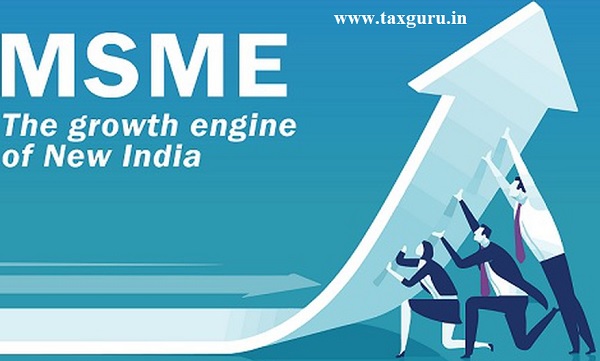Micro-Small & Medium Enterprises (MSMEs) contribute largely in the socio-economic development of our country. MSMEs come under the Ministry of Micro, Small & Medium Enterprises and are required to be registered to avail benefits under the Micro, Small and Medium Enterprises Development (MSMED) Act. MSME registration is highly important, as it enables these enterprises in availing benefits from various government initiated schemes. MSMEs are classified in two categories, such as manufacturing and service enterprises.
What all it requires to be registered as MSME?
It is an online process that requires your Aadhar number to get it certified. One can avail the certificate online without any need of the physical copy. Moreover, the process is simplified even further for the enterprises having the MSME Certificate to obtain licenses, approvals and registrations in any field for their business from their respective authorities. Such that they can produce the Certificate of MSME Registration while making an application itself. Not just that, applicants can reimburse the ISO Certificate Expenses by making an application to the respective authority supported by MSME Certificates.

Benefits of MSME?
1. Due to the registration, the bank loans become cheaper as the interest rate is very low around ~ 1 to 1.5%. Much lower than interest on regular loans.
2. There is a One Time Settlement Fee for non-paid amounts of MSME.
3. It also allowed credit for minimum alternate tax (MAT) to be carried forward for up to 15 years instead of 10 years
4. There are many government tenders which are only open to the MSME Industries.
5. Once registered the cost getting a patent done, or the cost of setting up the industry reduces as many rebates and concessions are available.
6. They get easy access to credit.
7. Business registered under MSME are given higher preference for government license and certification.
8. There are various tax rebates offered to MSME.
New Definition of MSME
In order to redefine the MSME, government has taken following measures:
– Increased Investment Limit
– Introduced additional criteria of turnover
– Eliminated difference between Manufacturing & Service sector
– Amendments to law will be made
Have a look at the new definition of MSME:
Now, under the Atmanirbhar Bharat Abhiyan (ABA), the government revised the MSME classification by inserting composite criteria of both investment and annual turnover. Also, the distinction between the manufacturing and the services sectors under the MSME definition has been removed. This removal will create parity between the sectors. The following is the revised MSME classification, where the investment and annual turnover, both are to be considered for deciding an MSME.
REVISED MSME CLASSIFICATION
| Criteria | Micro | Small | Medium |
| Investment
& Annual Turnover |
< Rs. 1 Crore
& < Rs. 5 Crore |
< Rs. 10 Crore
& < Rs. 50 Crore |
< Rs. 50 Crore
& < Rs. 250 Crore |
Contribution of the Micro, Small and Medium Enterprises in the Indian economy is as follows:
1. At present, approximately 36.1 million units of Micro, Small and Medium Enterprises are engaged in production in India.
2. MSMEs provide employment to around 120 million people in India.
3. MSMEs are responsible for a 45% share of India’s total export.
4. MSMEs contribute around 6.11% of the manufacturing GDP and 24.63% of the GDP from service activities.
5. The MSME sector has consistently grown at an average rate of 10% annually.
6. The contribution of this sector to the country’s Gross Domestic Product is about 8%.
7. A study done by the Confederation of Indian Industries (CII) on the Indian MSMEs reveals that the MSME’s contribution will be around 50% in the India’s GDP by 2024.
8. Many units of MSMEs are located in rural areas, which are checking the migration from rural areas to urban areas.
I am hopeful that the changes made in the definition of the MSMEs will enhance the ease of doing business and very soon the contribution of the manufacturing sector in the Indian GDP will touch to 25 percent.





Turnover will be considered for last financial year or average Annual Financial turnover during the last 3 years for MSME criteria.
Turnover will be considered for last financial year or last 3 years average financial year,
pl. confirm the same.
What happens when investment is less than 10 crores but turnover is greater than 50 crores.Is the unit small scale or medium scale
Society also include in MSME service sector. We given no of Empowerment .
If you can throw some light on the definition for investment , it will be of great use. Thanks
Read. Thanks.
Dear Sir,
Thank you for your information but i need one clarification that in 250 cr turnover export will be excluded or not ?